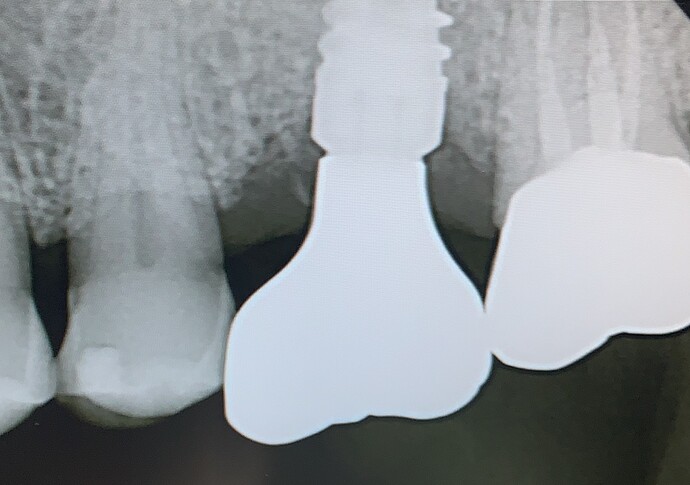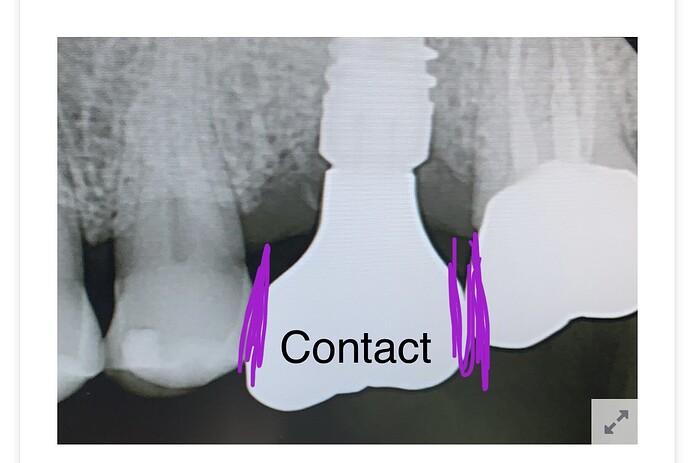Implant #14 was impressioned with a closed-tray technique. A radiograph was taken to confirm complete seating of the impression coping. When the crown was tried in, the occlusal table was noticeably higher than the adjacent teeth- it was off by a lot! In your opinion, what do you think went wrong here? In what step in the process from impression to crown fabrication could there have been an error?
I would suspect that there could have been some interchanging of OEM and aftermarket components. Perhaps it is an aftermarket abutment fabricated from an aftermarket analog and while the tools might be interchangeable the nuts and bolts are not… For example a Blue Sky Bio Tri Lobe abutment will not work on a Nobel fixture but a Nobel abutment will work on a BSB Tri Lobe fixture. Just a thought.
Many steeps in the analogue world can go wrong.
1- impression (materials, time, etc)
2- impression copping design, some are better
3- lab : analogue position, models fabrication
4- all the steeps needed to make the crown
5- as stated, parts quality
Only way is to re-do impression and ask for original parts and hope all the steeps are ok
Can you post the impression copping xray ?
Did the lab send models?
I suspect that it was caused by not sitting back fully the impression coping in the impression material, which created a faulty model where the implant is more apical than in the mouth hence a “taller” crown!
Dr L. Revah
Classic closed tray problem. Whoever replaced the coping back into the impression after it was taken did not seat it all the way. Dr. Revach explained what happens. Open tray impressions avoid that problem.
Closed Trays - Crowns etc
Open Tray - Implants
More than once, I’ve had this exact issue when using intraoral scanning. I believe that the lab mis-matches the scanning abutment size or in your case the impression post length. Clearly, this screw retained crown seats against the implant body. Had an error been made in the impression / scan the crown would not index properly with the abutment. The problem, I believe, is that the lab doesn’t properly recognize the impression post /scan body. This error occurs with scan bodies, as a consequence of model-free fabrication techniques. In this analogue case I think that if you look at the model work, you’ll find that the implant analogue is submerged more deeply than it’s depth in the mouth. Perhaps the model was made with an impression post that was longer than the one you used in the patients mouth.
Thanks to everyone for contributing based on their experiences. I have actually had this issue in the past for closed tray impressions where the impression coping was not fully seated back into the impression- precisely what S_Revach and JDPerio suggested. In this particular case, it was a digital scan so I was surprised to have encountered this error until I understood what Mrk_K shared with us about the lab not recognizing the scan body properly (even though they claim to). Again, thanks to everyone for sharing your opinions.

